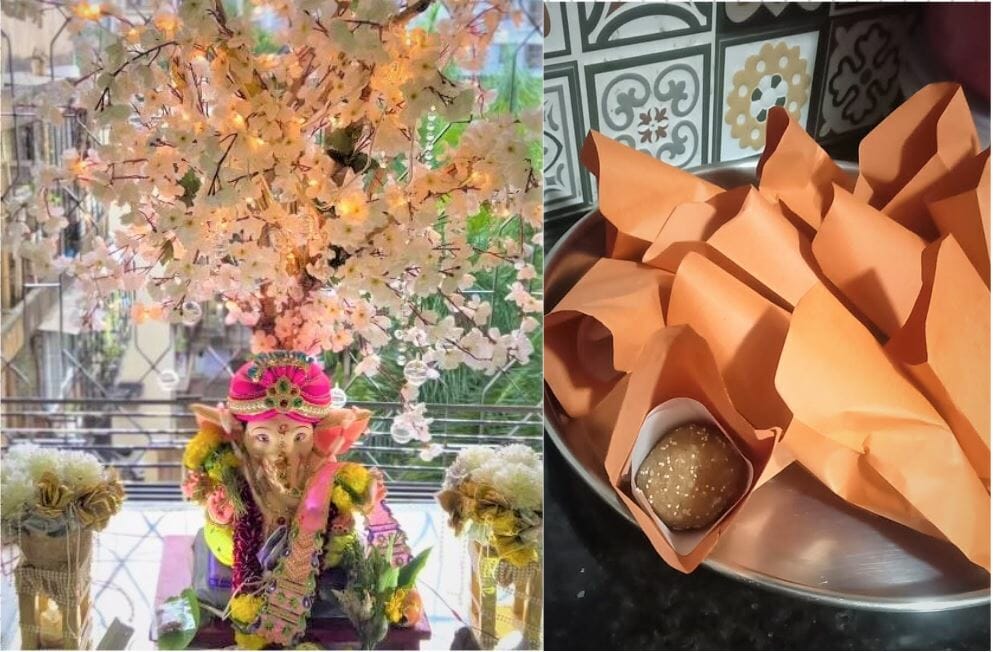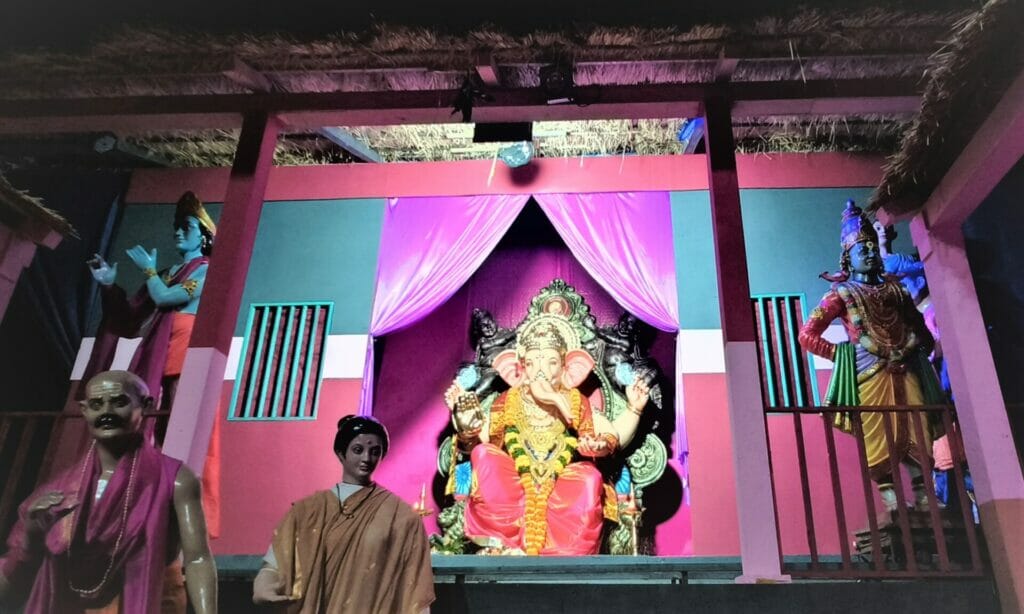Ganesh Chaturthi, a beloved festival in Mumbai, is about enthusiastic celebrations, but increasingly nudging citizens to engage in deep environmental reflection. In recent years, there has been a notable shift towards embracing eco-friendly practices in the festival’s preparations, particularly in the material used for the creation of Ganpati idols. According to Mumbai murtikars (idol-makers), the sale of eco-friendly idols have almost doubled this year.
This shift marks a positive departure from the traditional use of Plaster of Paris (POP) idols, which can have detrimental effects on our water bodies after immersion.
Many Ganesh mandals and families have taken the initiative of consciously opting for eco-friendly idols and decorations. Moreover, the municipal corporation has played its part in promoting eco-friendly celebrations. They have offered rent-free spaces for shadu (clay) material idols distributors and provided artificial ponds for the safe immersion of eco-friendly idols.
These combined efforts illustrate that it is entirely feasible to celebrate Ganesh Chaturthi in a manner that is both environmentally conscious and spiritually meaningful.
What defines an eco-friendly celebration?
“To truly embrace an eco-friendly Ganpati celebration, a comprehensive approach is essential,” says Pooja Domadia, co-founder, of Hum Prithvi Se, a venture trying to promote earth-friendly living through different workshops, event waste management, and more. They also conduct workshops on earth-friendly festivals and celebrations.
The comprehensive approach that Pooja talks about encompasses everything from the idol itself to the decorations, prasad and food provisions, and even the choice of paint for the idol, ensuring organic colours are used when crafting it from natural clay, she says. “There are also alternative eco-friendly idol materials like paper, but it’s crucial to consider the glue/adhesive used and the environmental impact of the material of the underlying structure that is holding the idol in such cases.”
According to Pooja, one exemplary approach is to reuse the idol annually. “I know of a family that has cherished a copper Ganpati idol for generations, spanning nearly 70-80 years, and they use it year after year, conducting a symbolic immersion. The beauty of sustainability lies in the numerous ways individuals can contribute to making this festival eco-conscious in their own way.”
Read more: Bappa Moraya: City wants to celebrate, BMC gears for Ganesh festival
An example of this practice can be seen in Parita Parekh, a Kandivali resident, who has been committed to infusing eco-friendliness into every aspect of the festival, “This marks the 9th year of welcoming Lord Ganpati into my home, and throughout this journey I have tried to make the entire festival more eco-friendly,” she says. Alongside the shadu Ganpati idol, she has chosen to use a natural tree branch and reusable artificial flowers for decorations, which she can use again over the years.
But beyond idol and decorations, Parita says it is important to understand the sustainability of materials used throughout the festivities. “Given the continuous stream of guests, it’s common practice to package prasad in plastic zip-lock bags or serve food on thermocole plates and glasses. However, simple yet effective alternatives exist. This year, I’ve been wrapping prasads in butter paper and presenting them in paper bags. For serving meals, we’ve transitioned to plates and spoons crafted from sugarcane residue. These minor adjustments allow us to celebrate the festival while reducing our environmental footprint in our unique way,” she says.

Efforts by mandals
Crafting smaller idols for home, up to 4 feet in height, from natural clay is relatively easy but it is hard to make larger idols, towering at 9 feet and above, while maintaining both sustainability and convenience. Nonetheless, various organising groups (mandals) have been putting in significant efforts to promote a more eco-friendly festival.
Akhil Bhatwadi Sarvjanik Utsav Mandal from Ghatkopar has been celebrating their 55th year of Ganpati festival. According to the organisers if the 9-foot idol is made out of natural clay, it becomes as heavy as 800-900 kilos making it difficult to carry during the immersion. However, the mandal has tried its best to have a sustainable approach in the other major area of the festival, which is the decoration. They used wood, cloth, dry grass, and paper for the entire decoration to avoid the use of thermocole, plastic and other non-biodegradable materials.

Meanwhile, other mandals like Lalbaugh and Elphinstone have managed to use idols that are completely sustainable. For instance, the 18-foot-tall idol of Lord Ganesh, by the Elphinstone Ganesha mandal is entirely made from eco-friendly paper. They used 200 to 250 kilograms of paper to create these idols, and it took three months to prepare them.
“Due to height restrictions on POP idols, the organising committee decided to explore alternative methods to create 18-foot idols. After extensive research, we found that eco-friendly paper idols could be crafted without compromising on height. These paper idols also dissolve within four hours when immersed in water,” explained Sanket, President of the Elphinstone Ganesha festival organising committee.

BMC initiatives
The BMC, in its preparations for Ganeshotsav this year, has made substantial efforts to promote environmentally friendly celebrations. These efforts include providing rent-free spaces within the city for eco-friendly idol makers and procuring natural clay, known as shadu matti, for distribution.
Furthermore, the BMC is actively working on expanding the number of artificial immersion sites from 154 last year to 250 this year, aligning with the Central Pollution Control Board’s (CPCB) guideline from May 12, 2020. The guideline encourages a gradual transition toward more eco-friendly Ganpati celebrations.
One of the central tenets of this guideline is to raise awareness and sensitise the public to the importance of eco-friendly festivities, a task that is being pursued at the ward level by civic officials.
The shift toward eco-friendly Ganpati celebrations in Mumbai signifies a promising change that combines tradition with environmental responsibility. From eco-conscious idols to biodegradable decorations and prasad, both individuals and Ganesh mandals have shown remarkable dedication to sustainability.
This movement demonstrates our ability to celebrate our cultural heritage while reducing our impact on the environment, promising a greener future for our city.
Do you celebrate Ganeshotsav in an eco-friendly way? We would love to hear from you about what you do, how you do it and how it would help the environment. Your response may help other families and groups, who wish to adopt green methods of celebration. Do write to us at mumbai@citizenmatters.in.